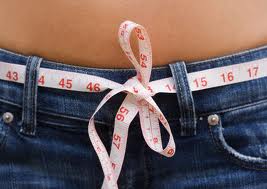Losing weight has become a difficult or an almost impossible task for most of us while on the other hand gaining weight for a normal person goes without any effort. Most people think that they gain weight when they eat more than what they can burn off. This can be termed as the foremost reason for being overweight. In simple words, you gain weight when you eat more and do moderate or no form of exercise. However, this principle does not always hold true. You can gain weight due to various health problems like hypothyroidism, anxiety, organ disease, food sensitivity, blood sugar imbalance, and kidney, liver or hear disease. Weight gain is also associated with Cushing’s syndrome, which is a rare disorder resulting from abnormally greater levels of cortisol hormone in the blood. Body’s hormonal systems are impaired due to high levels of cortisol, this leads to various problems including weight gain. Sometimes, people suffering from this syndrome also face severe complications like osteoporosis, hypertension and diabetes. This syndrome is most common amongst young and middle age women. Reasons for Weight Gain: Almost each one of us is struggling to maintain weight. Several diets are prescribed to individuals who want to lose weight, but there seems to be a dearth of knowledge on how to maintain your ideal weight. This is because most individuals are unaware as to why they are overweight and what the reasons behind their gaining extra weight are. Listed below are some of the causes that lead to weight gain. The possible reasons that may lead to overweight are listed below.
- Simple reasons:
Some of the simple reasons that may lead to weight gain are listed below:
- Overeating
- Pregnancy
- Aging
- Recent childbirth
- Appetite changes
- High carbohydrate diet
- High fat diet
- Excessive snacking
- Inactive lifestyle
- Less exercise
- Lifestyle changes that may lead to reduced activity or increased eating
- Comfort eating
- Stress
- Depression
- Compulsive eating
- Unhealthy eating behavior
- Medications like contraceptives
2. Diseases: People suffering from certain diseases tend to gain weight.
- Hypothyroidism
- Certain hormonal conditions
- Acromegalia
- Familial obesity
- Obesity
- Polycystic Ovary Syndrome (PCOS)
- Depression
- Hypoglycemia
- Diabetes
- Cushing’s syndrome
- Emotional conditions
- Psychological Disorder
- Hypothalamus disorder
- Brain tumor or trauma
- Brain disorder
3. Psychological disorder: It has been noticed that people suffering from some kind of psychological disorder gain weight. Certain psychological disorders that may lead to gaining weight are:
- Comfort eating
- Depression-related eating
- Anxiety-triggered eating
- Reactive hyperphagia
4. Fluid retention: Weight gain is not necessarily due to fat retention, it has also been observed in case of fluid retention. Some of such conditions are mentioned below:
- Premenstrual bloating
- Edema
- Nephrosis
- Congestive heart failure
- Heart failure
- Cirrhosis of the liver
- Kidney failure
- Lymphatic obstruction
- Excessive IV fluid
Conclusion: Listed above are the possible reasons through which you can gain weight. However, the most common reason for gaining weight is your diet. Your diet plays a key role when it comes to weight gain. If your diet includes a lot of calories and fats, especially from fast foods, you are bound to gain weight.? You are advised to consume a well-balanced diet that is rich in variety of vegetables and fruits, wholegrain and also lean meats like chicken. Besides, you should also pay heed to your physical activity. If you desire to lose weight, you have to incorporate exercise in your daily regime. Physical inactivity is the second biggest reason for gaining weight. Women especially tend to ignore exercise and hence accumulate extra body fat. By doing exercise, you not only stay away from being overweight you also actively reduce risk of developing certain diseases mainly cardiovascular diseases.




